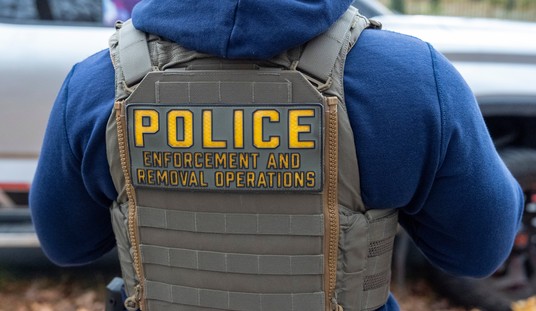Once again, Iran's death machine is operating at full throttle, and once again, the West looks away. Is no one paying attention because the world’s focus is fixed on Gaza and Ukraine? While the global headlines are dominated by those conflicts, Iran’s rulers are quietly carrying out one of the most barbaric killing sprees in modern history and getting away with it.
In just 14 and a half months, under President Masoud Pezeshkian, the Iranian regime has executed over 2,000 people. Let that sink in. Over two thousand lives snuffed out by hanging, often in secret, always without fair trial, and sometimes for nothing more than political dissent. That’s an average of nearly five executions a day. Yet the world, seemingly numbed or distracted, offers little more than murmurs of disapproval. Where is the outrage? Where are the resolutions? Where are the sanctions? Where is the moral backbone?
In a desperate and courageous act of defiance, 1,500 prisoners in Unit 2 of Iran’s notorious Ghezel Hesar Prison in Karaj, a large city west of Tehran, have launched a mass hunger strike and sit-in, chanting “No to Execution” in the corridors of death. These are victims on the edge of life, living under constant threat of being dragged to the gallows in the dead of night. Their message is clear and piercing; enough is enough.
The response from Tehran has been predictably cruel. Prison authorities threatened to cut off food and supplies. Solitary confinement is used like a weapon. Executions continue regardless. And all the while, Iran’s judiciary parrots the same tired lies about “extremely violent criminals” and “divine justice.” In reality, these victims are mainly young political prisoners, ethnic minorities, and even women. Thirty-nine women have been executed this year alone.
On July 7, 2025, the IRGC-affiliated Fars News Agency openly called for a repeat of the 1988 massacre, when 30,000 political prisoners were executed in cold blood. That chilling call has gone largely unanswered by the international community, giving Tehran all the encouragement it needs to continue with impunity. According to Iran Human Rights, 1,128 people have been executed so far this year, the highest number since records began. The National Council of Resistance of Iran (NCRI), whose intelligence has repeatedly been proven accurate, reports that 170 executions took place in just 22 days last month, one every three hours. This is not “law enforcement.” This is systematic state terror.
Recommended
Among the latest victims of Iran’s brutal judiciary are 17 political prisoners, ranging in age from 22 to 66, all sentenced to death for alleged affiliation with the Mujahedin-e Khalq (MEK). Their only “crime” appears to be political belief and association. On July 27, two others, Behrouz Ehsani, 69, and Mehdi Hassani, 48, were hanged on the same charge.
While Iran continues to execute its own citizens at a horrifying rate, no nation on earth comes close to this scale of state-sanctioned killing of its own citizens per capita. No other nation that still uses the death penalty can match the mullahs’ calculated cruelty, the deliberate targeting of protesters, ethnic minorities and political prisoners in a campaign of fear.
This is not justice. It is judicial murder; the cold, methodical extinguishing of life by a regime that fears its own people. Every gallows raised in Iran is a grim monument to the mullahs’ insecurity and desperation. Inside Iran, a grassroots movement is rising in solidarity. From Evin Prison in Tehran to the family members standing vigil outside prison gates, the people of Iran are saying, "We will not go quietly to the gallows." A campaign known as “No to Execution Tuesdays,” now in its 90th week, sees coordinated symbolic resistance across 52 prisons.
Still, the West refuses to act. Some governments issue cautious condemnations, perhaps a strongly worded tweet or a concerned press statement. But that is not action, it is abdication. At an international conference in London on October 11, Maryam Rajavi, President-elect of the National Council of Resistance of Iran (NCRI), made a powerful appeal: “Stop auctioning off the human rights of our oppressed compatriots. Make your relations with this regime conditional on an immediate halt to executions.” She’s absolutely right.
Yet, instead of heeding these calls, some Western diplomats still line up for handshakes in Tehran, pretending that reform is just around the corner. This is delusion. The Iranian regime does not reform; it represses. It does not negotiate in good faith; it manipulates. It does not spare lives; it extinguishes them to survive. The hunger strike in Ghezel Hesar is more than a prison protest; it is a moment of moral clarity for the world. If we ignore it, we lose not only those threatened lives but also our credibility, our values, and our claim to stand for human rights.
The U.S., the European Union, the United Kingdom, and the United Nations must act now. Issue targeted sanctions against Iranian officials responsible for these executions. Expel ambassadors. Freeze assets. Launch international investigations. Make it clear that the world will no longer tolerate mass state murder as an internal matter. The Islamic Republic has always feared one thing above all, international isolation tied to its domestic abuses. Let us give them what they fear. Because silence, at this moment, is complicity. And history will not be kind to those who stood by while the noose tightened around the necks of the innocent.
Struan Stevenson is the Coordinator of the Campaign for Iran Change (CiC). He was a member of the European Parliament representing Scotland (1999-2014), president of the Parliament's Delegation for Relations with Iraq (2009-14) and chairman of the Friends of a Free Iran Intergroup (2004-14). He is an author and international lecturer on the Middle East.
Editor’s Note: The Schumer Shutdown is here. Rather than put the American people first, Chuck Schumer and the radical Democrats forced a government shutdown for healthcare for illegals. They own this.
Help us continue to report the truth about the Schumer Shutdown. Use promo code POTUS47 to get 74% off your VIP membership.

























Join the conversation as a VIP Member